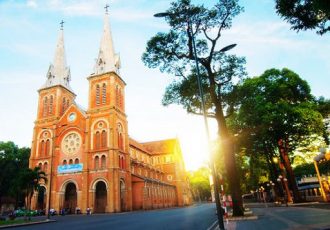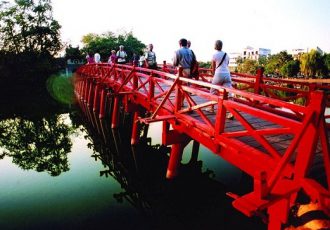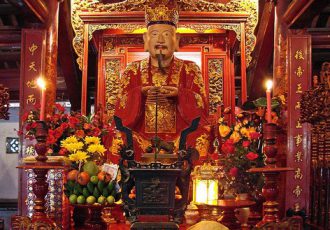Christianity in Vietnam
A religion that has existed for nearly 5 centuries in Vietnam
Although Western missionaries visited Tonkin briefly in 1533, and Annam in 1596, it was not until 1615 that Portuguese Dominicans founded the first Catholic missions in Hoi An, Danang and Hanoi, marking the beginning of Christianity in Vietnam. The first Vietnamese priests were to be ordained in 1668.
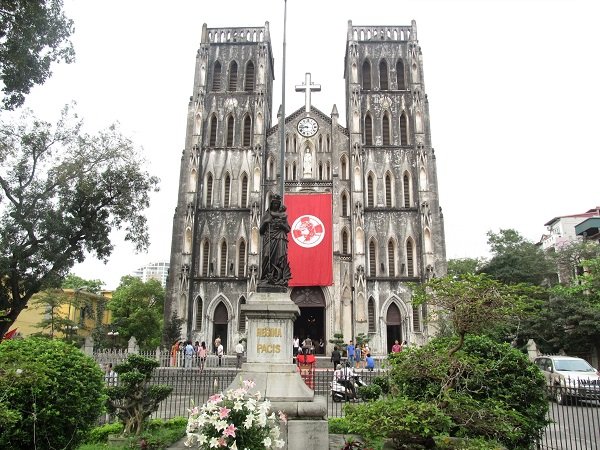
The Church of Hanoi
But this foreign religion threatened the very foundations of Vietnamese society by considering the worship of Heaven and ancestors as superstitious practices. As early as 1630, the Trinh dynasty issued the first of a series of edicts outlawing Christianity in Vietnam. Throughout the 18th century, the Trinh and Nguyen pursued a fluctuating policy, alternating between persecution and religious tolerance.
It was during this time of unrest that the Jesuit missionary Alexandre de Rhodes developed Quoc Ngu , or the romanization of Vietnamese writing, which is still used today. Pierre Joseph Georges Pigneau, known as " The Pigneau of Behaine ," Bishop of Adran, played a decisive role in the history, both religious and political, of Vietnam. He helped Nguyen Anh in his policy of reconquest of the country and under the reign of the founder of the Nguyen dynasty (1802-1820), Christians enjoyed complete religious freedom.
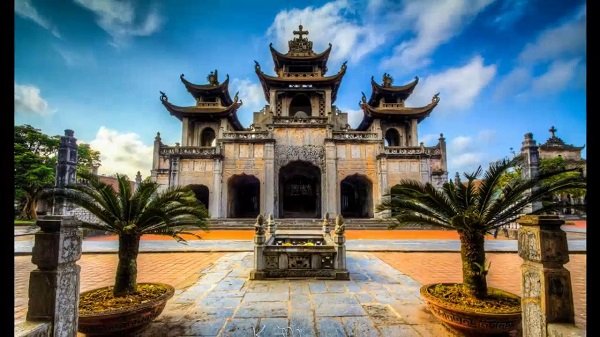
Phat Diem Church in Ninh Binh
In the history of Vietnam
It was not the same for his successors, who were very attached to Confucian ideology; Minh Mang (1820-1841) banned the entry of Christian missionaries into Vietnamese territory in 1825.
Trieu Tri (1841-1847) was more tolerant; but Tu Duc (1848-1883) persecuted people who adhered to Christianity in Vietnam. These intransigent positions provided a pretext for the French to intervene in Vietnam. By the treaty signed in 1862 with France, Tu Duc recognized the free practice of the Catholic faith in Vietnam, but the persecutions resumed with renewed vigor between 1882 and 1884. They were to cease in 1885, when France had conquered the entire country.
Christians in Vietnam were then able to practice their religion without being disturbed. Congregations took root, opening schools and hospitals, and the Church became organized. In 1939, the number of Christians was estimated at 100,000, out of a population of 18 million Vietnamese.
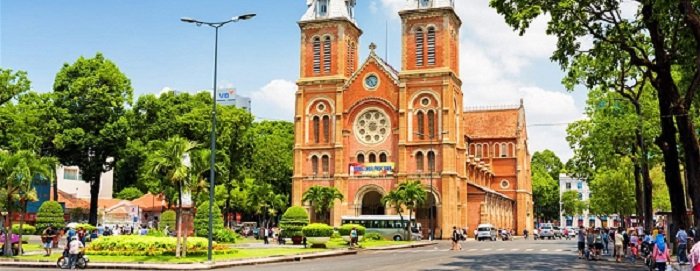
In front of Notre Dame Church in Saigon, Vietnam
However, the advent of the Democratic Republic of Vietnam in 1954 was to change the face of Christianity in Vietnam. Of the 800,000 North Vietnamese who fled to the south, 600,000 were Catholics.
Since 1975, freedom of worship has been theoretically guaranteed, but the number of orders is limited and all Catholic schools have been secularized. Vietnam currently has approximately five million Catholics.
Protestantism entered Vietnam in 1911. This community recruits most of its followers (around two hundred thousand) from the hill tribes of the Centre.
Like that of Catholic priests, the activity of Protestant pastors is today limited by the Government.

